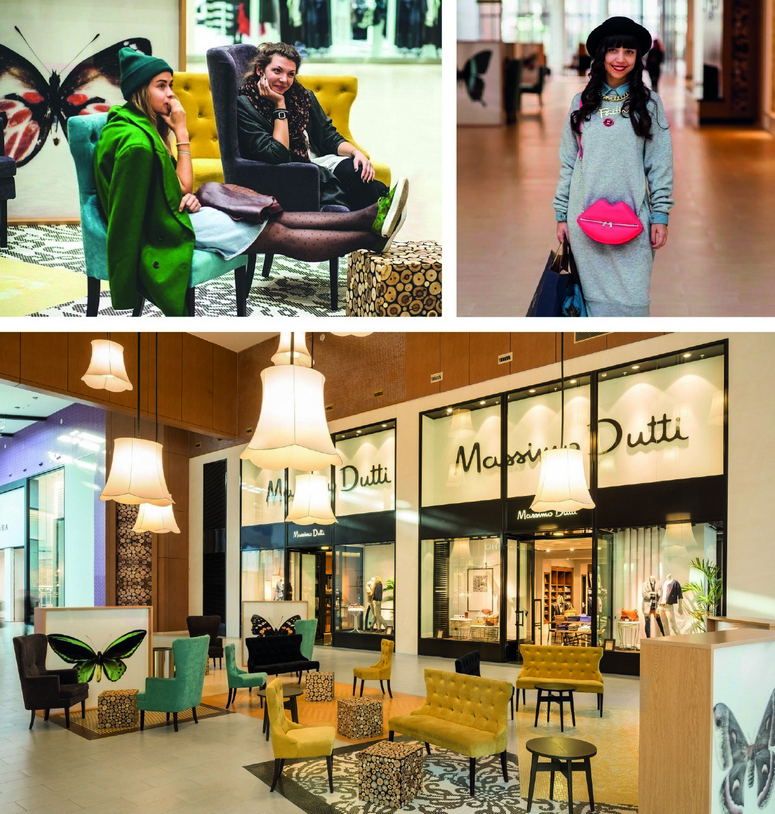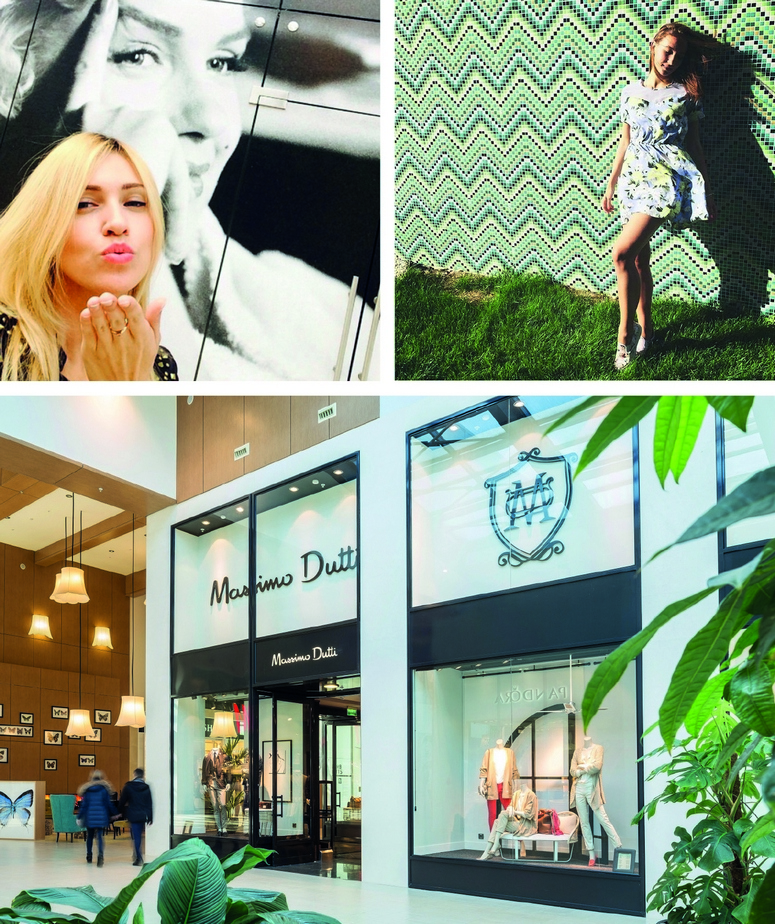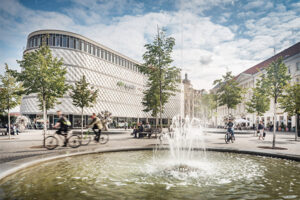By Toni T. Jörgens
Our modern society is deeply influenced by an explosion of media content such as original TV shows, food and friends on Instagram, and, more recently, in the form of (disappearing) snapshots, too. Entering a shopping center today, modern visitors expect an experience for all their senses and want to share this with friends everywhere. Thus, a new “integrated design” thinking has to live up to this need to create a balanced and synergic experience of life and leisure time.
Having worked before in the leisure and entertainment industry, we at ESP. Design Studios are always focused on the shoppers and their experience of the place. The difference in an “experience design” process, which goes back to the early days of Disney, is not only that it’s centered around “storytelling” at its core, but also that it’s an “integrated design” process in which all disciplines, whether architecture, interior, or brand design, are linked together as one related process. The linkage of these disciplines, which is a common practice in the entertainment industry, has yet to emerge fully in the shopping center industry, where first attempts have already been made by combining interior and brand design. While this holistic approach may sound strange in relation to the traditional architectural design process, creating an “immersive environment” beyond the limits of a building that truly captures visitors has become essential in order for malls to become relevant as desired (lifestyle) brands on their own.

The “story” drives the design
In order to link all the disciplines successfully into one “integrated design” process, it all begins with the “story.” Why is the “story” so important to begin with? When starting the design process, there are typically many ideas and “stories” floating around. There is the architect’s story, which may lie in the architectural context or derive from an urban planning standpoint; or the interior designers’ story, which relates to their own ideas on how best to showcase their story in a unique ambiance; and there is the brand designer’s story, who scripts his or her very own story for the marketing concept to be presented to the tenants and consumers. While each of the individual “stories” and ideas are absolutely great, they unfortunately have nothing or only little in common and are the beginning of a big problem… Sounds familiar, right? So what went wrong?
It’s significant to understand that the story should never start with the building, interior, or brand. The story is the “big idea” of the project which has to be in place even before the first sketch is made. A great amount of creativity, time, and effort needs to be taken into account early on to get the story right. It’s a nerve-racking process with a lot of ideas not only to be filtered by content, but also by feasibility, which need to be transformed into a program and buildable ideas. The process can definitely be compared to a movie production, where the script has to be—or should be—in place prior to any budget “green-light.” The story becomes the blueprint of the project and drives the design, from the big idea down to the smallest detail.

Breaking the barriers between the architectural, interior, and brand designs
With the story in place, the story or “script” serves as the binding link between the architecture, interior, and brand designs. All participants, be it the architects and designers or the branding, marketing, and leasing specialists, need to be assigned to the STORY and not (just) to the project. This different way of thinking is so essential, that we at ESP. Design Studios have established in-house teams with no barriers between the architects, interior, and brand designers and involve all of them at the very start of a project to join their work together. This process ensures that the different design disciplines do not just become individual “layers” in the project, but are instead deeply integrated into the project’s design.
Every decision made during the design process is not a question of the architectural or brand design for example, it becomes a joint process which has to insert itself into the context of the story as a binding element of the “integrated design” process. What color palette should I choose? What mood should the interior have? What’s the idea for the building structure? How does the façade come into play? The answers to all these questions lie in the story, right down to the name and logo, which should be considered from the start and evolve hand-in-hand with the design.
This “integrated design” process does not only motivate each team member to contribute different and new ideas to be included by other disciplines, it also fosters collaboration while working on the same story and sharing the same dream and beliefs.
The strength of unity
Looking at our industry with “placemaking” at its core, it’s still, despite the vast modernization of spaces, very much driven by the traditional architectural and design process, keeping barriers between the individual disciplines and sacrificing the guest experience by separating functions. The shift to a unified approach can be compared to the shift at Apple, for example, when they decided to unite hardware and software design. Its strength lies in the consistent transformation of the design into the final product, which becomes so much more plausible to the consumer.
Furthermore, the unified approach substantially reduces the risk of getting lost in the design process. How many times have you started out with a great idea that gradually, while going through an intensely challenging design and development process, had to be revised one time too often to keep the idea consistent through to the end to unfold fully to your visitors?
Being united in the design process, you have the opportunity to adapt to these changes early on. Since the design has to remain flexible during the development, so does your story. Simply adapt the circumstances to the story.

A good design comes at no extra cost
There are further compelling reasons for an “integrated design” process. A good design comes at no extra cost. While we often hear that our design “looks expensive,” we take that as a compliment. By linking all design disciplines together, team members never squabble over the costs for a chic façade material versus that of a super-slim atrium structure or a poshly designed bench. It’s all driven by the story and balanced in the early design stages so that the various parts complement rather than compete with each other. The clear advantage of the process is that the “wows” can be built in early on and staged based on what’s best for delivering a great guest experience and creating that special look and feel we all have in mind. Sometimes the “Wow” can be just that one iconic element, like having the world’s biggest or greatest of something, and sometimes the “wow” is simply the succession of small items that form the big picture. While there are no individual decisions taken by the individual disciplines to drive the price up bit by bit, there is also less of a need for last-minute budget cuts that leave only a little of the original idea you began with left.
The opportunities are endless
While we dream up the story and design, we are not thinking about the costs, the functions, or even about shopping. We simply think about a place that is so special, incredibly beautiful, and lovingly designed down to the smallest detail that it hopefully becomes irresistible in the neighborhood.
Then, all of the sudden, everything becomes so easy. You get to the hearts of the people, you become relevant to the community, and it feels natural, as if as you had always been there. The shopping center makes everybody look good as a sought-after backdrop to be photographed with—actually being a social media superstar loved by your followers. The result is a place where you can meet up with friends or have a drink or two.
The “story” becomes a “brand.” A brand in an “immersive environment” with the guest experience at its core. Everything fits together, from the first touchpoint, like the façade, to the interior, with all its colors and fabrics, to the lighting and music, which set the mood of the day, on to the website and daily marketing campaigns. Your tenants will love it, as will your marketing department, your city, and even the ever-worrying financial advisors. But most importantly, your visitors will, too. While everybody is there, they may even buy and eat something as well. It’s not magical, we simply call it ESP.ecial…
So, should we be worried about the rise of disappearing snapshots? No, we can take them into our world. Our opportunities are greater and endless, they are just sitting there and waiting to be discovered. Or in the wise words of British poet Arthur O’Shaughnessy: “We are the music makers, and we are the dreamers of dreams.” Maybe it’s a good time to get a little bit more disruptive too. Shall we?





